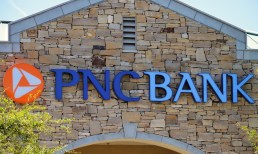Digitization isn’t just about adopting technology. It’s about streamlining the back office with a goal of modernization, integration and efficiency. That can be challenging for any single company, but when a business goes through a merger, ensuring that the once-separate back-office entities can be combined into a single, seamless operation is especially difficult.
That challenge increased fourfold for Payroc, which formed at the end of 2019 as the result of a four-way merger between NXGEN International, Caledon and Payscape. Digitization and integration became top of mind for the newly combined, digital-first payment company. Yet that merger happened mere months before the pandemic hit the U.S., and according to Chief Financial Officer Kevin Hodges, what had initially been planned as a marathon turned into a race to the digitization finish line.
“Within the organization, plans had already been made to consolidate the teams and financial systems, and to move to a single set of bank accounts and corporate cards — all of the things that would normally happen during an integration,” he recently told Karen Webster. “But because of the pandemic, we pressed that 18-month integration timeframe into a handful of months.”
Despite the haste, Hodges said the experience actually presented some valuable opportunities for Payroc to embrace a deeper level of modernization around accounting and banking — to not only fulfill its integration plans, but to also achieve visibility across the enterprise for a team of professionals who were suddenly working from home.
Coming Together
Amid the digitization drive, the concept of consolidation became imperative for Hodges and the company at large. That not only meant bringing together four previously independent firms (and their back-office functions), but also shaping Hodges’ approach to managing finances overall.
Advertisement: Scroll to Continue
“Being a CFO, I want to have a single source of truth,” he explained, noting that when he came on board with Payroc last August, he prioritized data unification through the creation of a single general ledger system. Consolidation of invoicing, accounts payable and expense reports all in one system created the opportunity for greater visibility into the organization’s overall finances at any given time. “Having that single set of tools to look at our data, accounting records and management reporting made our lives a lot easier, because we didn’t have to think about whether there are multiple versions of the truth.”
This unification initiative spanned the organization’s team members, too, with Hodges highlighting how important it was for the staff to come together — often by embracing digital collaboration tools like Zoom and Microsoft Teams — to achieve its digitization goals. Ultimately, he said, the company came out stronger as a result.
No Silver Bullet
While Payroc’s business model keeps digitization front and center, Hodges acknowledged that there are still areas that need improvement on the modernization front. Accounts receivable and accounts payable emerged as key challenges that were not entirely digital when the pandemic hit — and even today, the company still handles paper checks in both functions.
Yet as the firm makes progress, Hodges also emphasized that digitizing workflows through technology adoption isn’t necessarily a catch-all solution that guarantees optimization and efficiency. Rather, businesses must first begin with a foundation of optimized workflows. Otherwise, the automation solutions they implement will merely digitize clunky, non-optimized processes.
“I’m naturally a little skeptical of tools that say they will save a bunch of time or money through the digitization of a process,” he said. “If you have a company with not-so-great practices and they try to bring in a software tool, a shiny new toy … it fundamentally doesn’t change how the company is going to operate.” Instead, to truly bring efficiency to their back offices, businesses must be willing to embrace a mindset shift and alter existing processes.
Looking Ahead
As Payroc continues along its digitization journey, Hodges said he will prioritize technologies that can empower him with actionable insights — not only into the past, but also what’s to come. Access to real-time data is key to today’s CFO bringing value to the enterprise, he said. The pandemic has only intensified that importance as markets fluctuate on a daily basis.
“Things are changing all the time,” said Hodges. “As California comes in and out of lockdown and Texas releases the mask mandate, being able to understand how these factors influence our portfolio is really important.”
A forward-looking outlook is what makes a modern CFO a business leader, one who not only uses historical data to articulate where the company has been, but who also wields data to steer the organization into the future. According to Hodges, the CFO should be at the helm of digitization efforts to strengthen a firm’s futuristic stance.
“As CFOs, we can be the champions of digitizing processes, modernizing things and showing a return on investment,” he said. “We can show what it’s done to create efficiencies and allow for more growth. That’s where we can be very valuable.”



